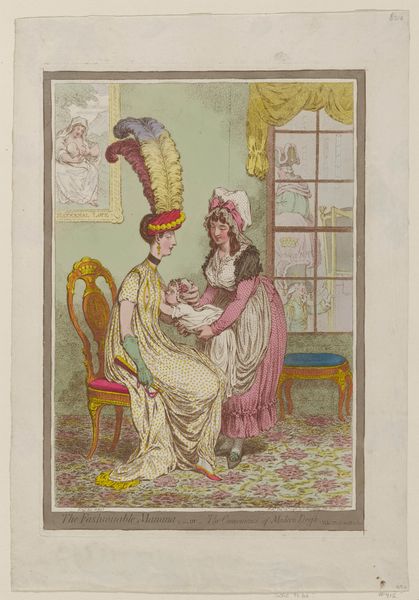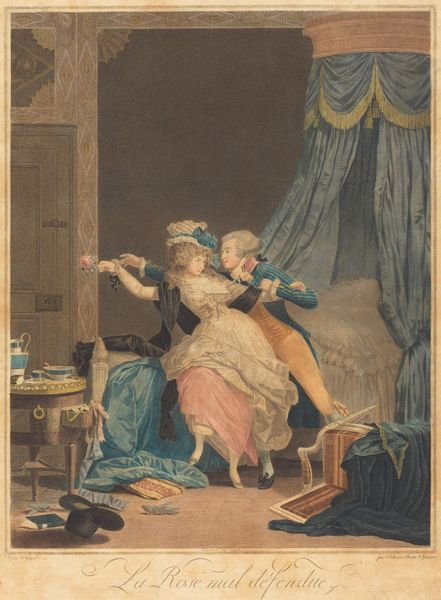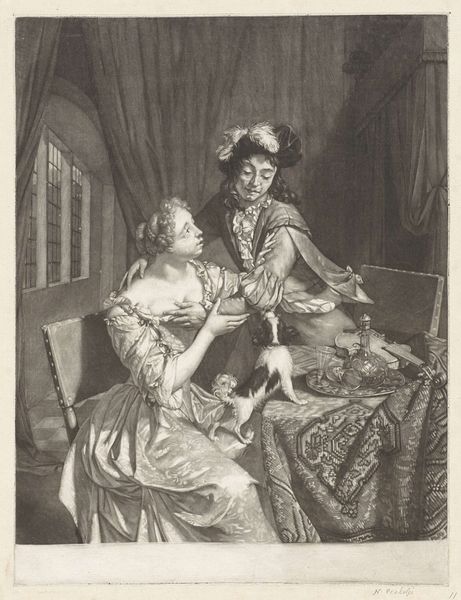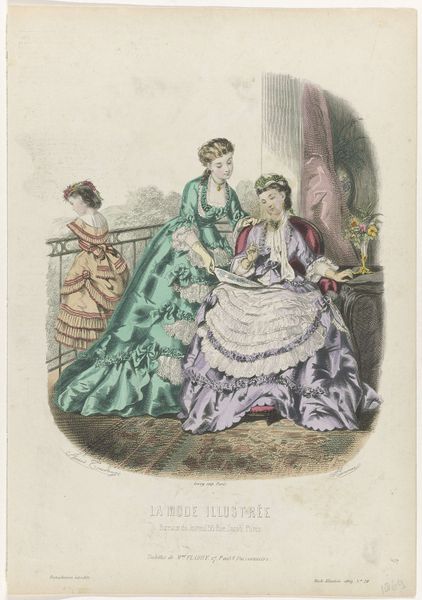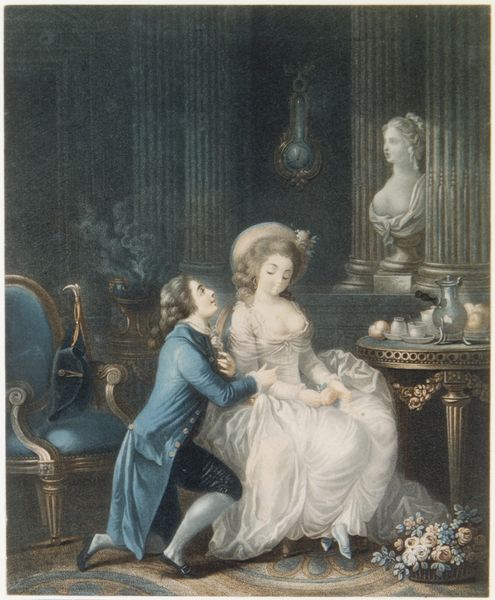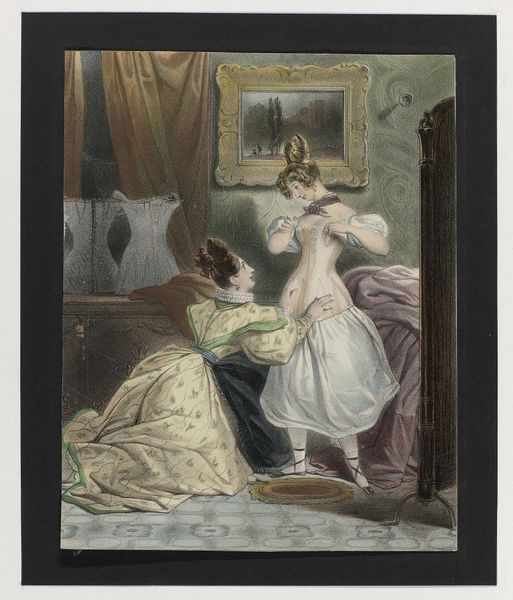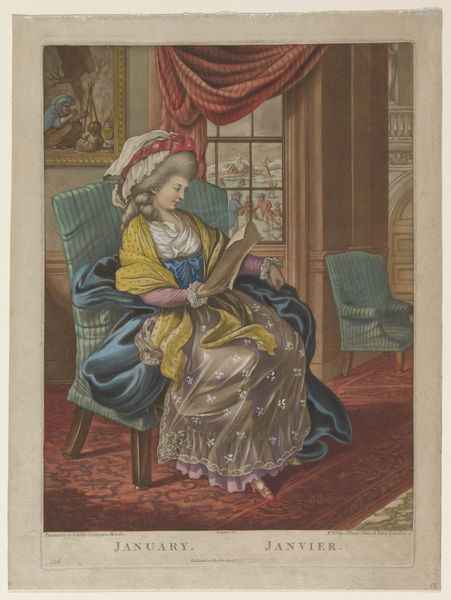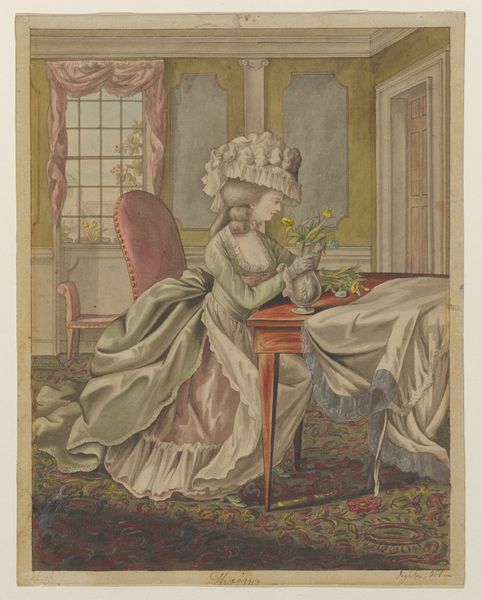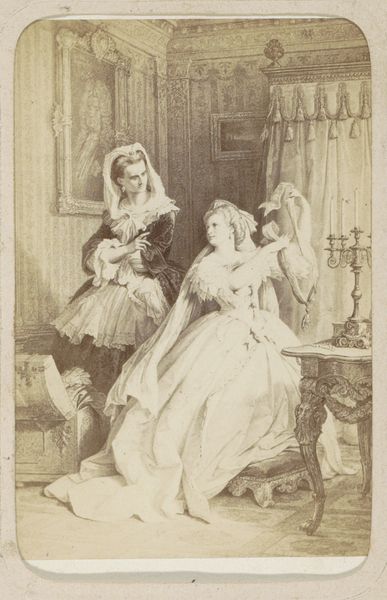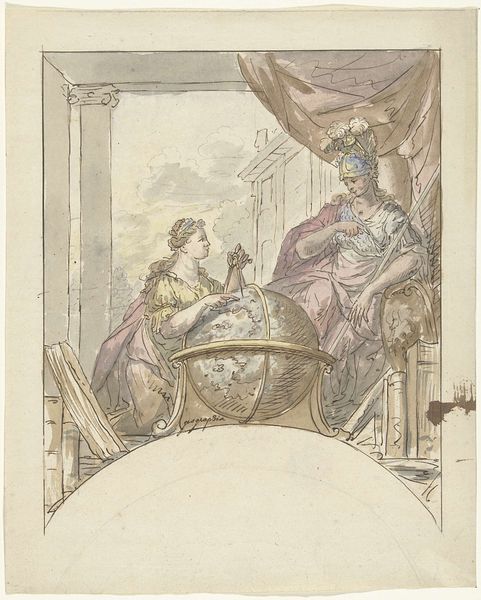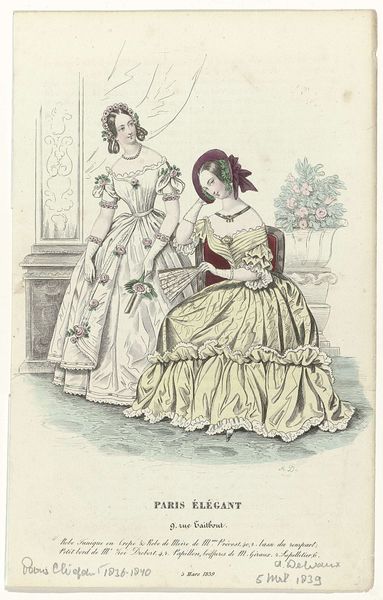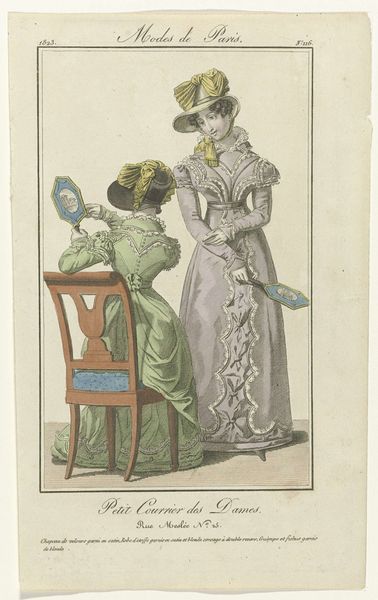
Les femmes. Galerie fashionable, ca. 1830: Comme il m'aime!!! (...) c. 1830
0:00
0:00
mixed-media, watercolor
#
portrait
#
mixed-media
#
caricature
#
caricature
#
watercolor
#
romanticism
#
watercolour illustration
#
genre-painting
#
surrealist
Dimensions: height 342 mm, width 300 mm
Copyright: Rijks Museum: Open Domain
Editor: Here we have "Les femmes. Galerie fashionable, ca. 1830: Comme il m'aime!!! (...)" created around 1830 by Joseph Lemercier, employing watercolor and mixed media. It’s a rather intimate scene of two women, rendered with a touch of caricature. There's something theatrical about it. What stands out to you? Curator: The “theatricality” you point out is key. This piece gives us insight into the constructed performance of femininity within early 19th-century French society. These 'fashionable women' are consciously embodying a role. Look at the exaggerated costumes, the setting… even the title drips with a certain irony about the performance of love. Consider the social role of women at this time; their value was heavily tied to marriage and attracting male attention. Do you see any evidence of how the artist makes commentary about this? Editor: Well, there’s that slightly satirical rendering of the women. They aren’t idealized beauties; their features are exaggerated. The woman on the left especially seems a little too preoccupied with appearance... and her pose, with the finger to her mouth as if keeping a secret, does make me wonder about her genuine sentiments. Curator: Exactly. And look at the setting! A bourgeois interior carefully constructed to impress. The wallpaper, the vase of flowers - all symbols of wealth and status designed to project a certain image. These were commercially available lithographs designed to circulate ideas – and often to gently mock them, reaching a wide audience and sparking conversations around class and gender. Is there anything you find surprising or unexpected about this artwork now, understanding it in its historical context? Editor: I suppose I initially viewed it as simply a portrait of two women, but now I see a subtle commentary on societal expectations and the pressures women faced. It’s a sharp reminder that what appears on the surface isn't always the full picture. Curator: Precisely. It makes one reflect on what's changed, and what hasn't, in our contemporary image culture.
Comments
No comments
Be the first to comment and join the conversation on the ultimate creative platform.
